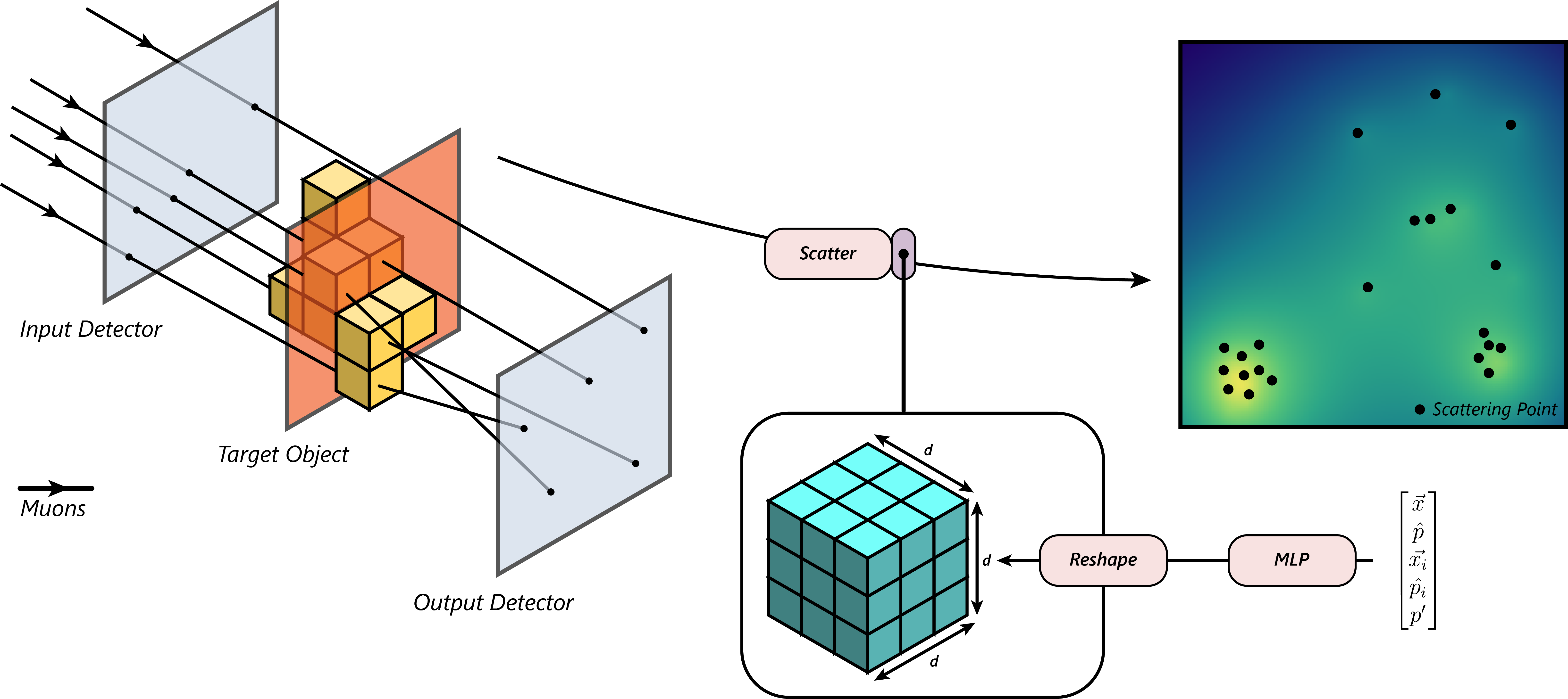Muon scattering tomography utilises muons, typically originating from cosmic rays to image the interiors of dense objects. However, due to the low flux of cosmic ray muons at sea-level and the highly complex interactions that muons display when travelling through matter, existing reconstruction algorithms often suffer from low resolution and high noise. In this work, we develop a novel two-stage deep learning algorithm, µ-Net, consisting of an MLP to predict the muon trajectory and a ConvNeXt-based U-Net to convert the scattering points into voxels. µ-Net achieves a state-of-the-art performance of 17.14 PSNR at the dosage of 1024 muons, outperforming traditional reconstruction algorithms such as the point of closest approach algorithm and maximum likelihood and expectation maximisation algorithm. Furthermore, we find that our method is robust to various corruptions such as inaccuracies in the muon momentum or a limited detector resolution. We also generate and publicly release the first large-scale dataset that maps muon detections to voxels. We hope that our research will spark further investigations into the potential of deep learning to revolutionise this field.
Our dataset can be found https://www.kaggle.com/datasets/tomandjerry2005/muons-scattering-dataset. The code for data generation can be found at https://github.com/jedlimlx/Muons-Data-Generation.
We are currently in the process of porting the code to Keras 3 so trained model weights are not available yet.
For the tiny model size,
model = Agg3D(
**{
'point_size': 1,
'downward_convs': [1, 2, 3, 4, 5],
'downward_filters': [8, 16, 32, 64, 128],
'upward_convs': [4, 3, 2, 1],
'upward_filters': [64, 32, 16, 8],
'resolution': 64,
'threshold': 1e-8
}
)For the base model size,
model = Agg3D(
**{
'point_size': 1,
'downward_convs': [1, 2, 4, 4, 6],
'downward_filters': [16, 32, 64, 128, 256],
'upward_convs': [4, 4, 2, 1],
'upward_filters': [128, 64, 32, 16],
'resolution': 64,
'threshold': 1e-8
}
)For the large model size,
model = Agg3D(
**{
'point_size': 1,
'downward_convs': [1, 2, 4, 6, 8],
'downward_filters': [24, 48, 96, 192, 384],
'upward_convs': [6, 4, 2, 1],
'upward_filters': [192, 96, 48, 24],
'resolution': 64,
'threshold': 1e-8
}
)A sample notebook for loading the data and training the model are available in this repo.
Some sample reconstructions from our model can be found below.
3D reconstructions produced by µ-Net-L at various dosages. The improvement in reconstruction quality as the dosage increases can be seen clearly.
2D cross-sections of the 3D reconstructions produced by µ-Net-L at various dosages. The improvement in reconstruction quality as the dosage increases can be seen clearly. We also see that some cross-sections appear to have worse cross-sections. This is because the materials being reconstructed have a high radiation length, so the muons do not scatter very much.
This is a 3D plot and a cross-section of one of the imaging targets from the testing set. The ability of the model to reconstruct the approximate shapes and differentiate materials is shown clearly. However, there is still a significant amount of blurring. (left) ground truth, (middle) µ-Net, (right) PoCA




